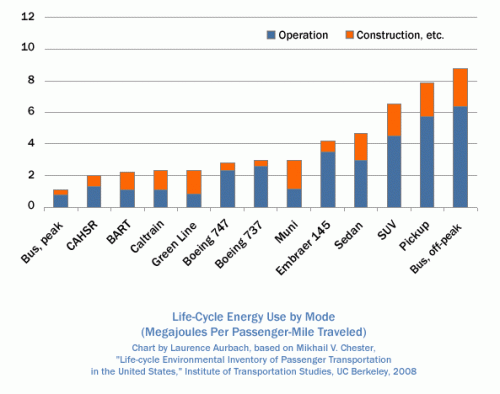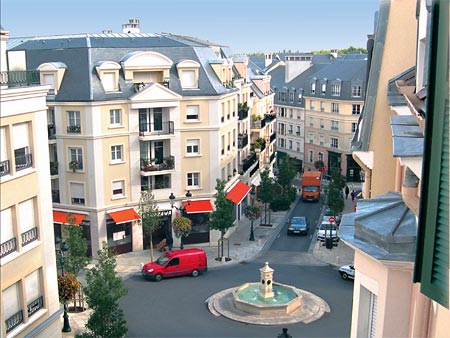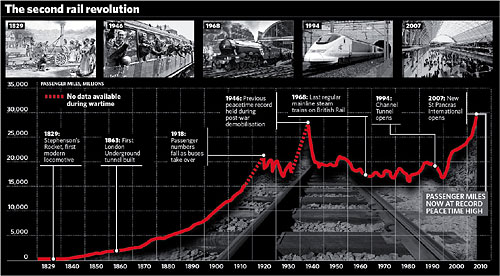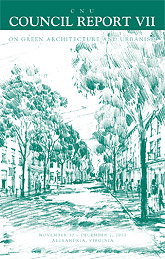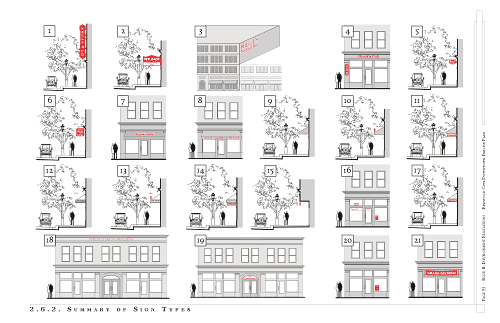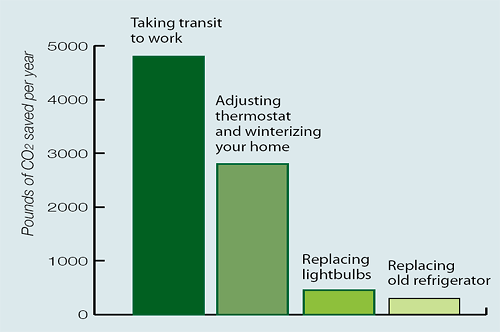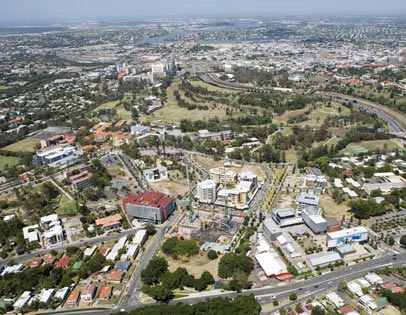The report Life-cycle Environmental Inventory of Passenger Transportation in the United States bills itself as “the first comprehensive environmental life-cycle assessment of automobiles, buses, trains, and aircraft in the United States.” The report, by Mikhail V. Chester of the Institute of Transportation Studies at Berkeley, goes far beyond counting the fuel consumed by vehicles. It considers the energy and materials used to build stations, terminals, roadways, runways, tracks, bridges, tunnels, and parking, as well as maintenance, heating, lighting, and more. A full life-cycle accounting of travel modes has been a long time coming; it is critically needed and tremendously welcome.
The findings on life-cycle energy use are summarized in this chart:
Read on for a summary of the findings, and a discussion of how the results are affected by urban design context.

